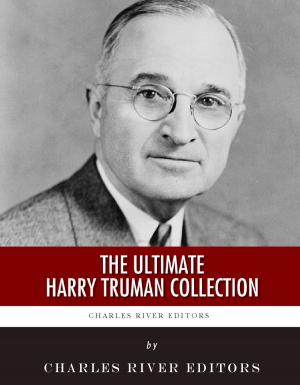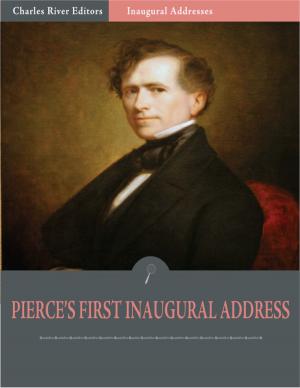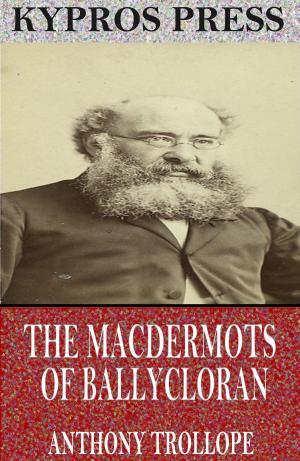American Legends: The Life of Dred Scott and the Dred Scott Decision
Nonfiction, Reference & Language, Law, Civil Rights, History, Americas, United States, Civil War Period (1850-1877), 19th Century| Author: | Charles River Editors | ISBN: | 9781475320114 |
| Publisher: | Charles River Editors | Publication: | December 5, 2012 |
| Imprint: | Language: | English |
| Author: | Charles River Editors |
| ISBN: | 9781475320114 |
| Publisher: | Charles River Editors |
| Publication: | December 5, 2012 |
| Imprint: | |
| Language: | English |
*Includes the full text of the Dred Scott decision and every opinion written by the Supreme Court justices. *Analyzes the Dred Scott decision and its impact on future civil rights cases.*Includes pictures of important people, places, and events. *Includes a Table of Contents. "The question is simply this: Can a negro, whose ancestors were imported into this country, and sold as slaves, become a member of the political community formed and brought into existence by the Constitution of the United States, and as such become entitled to all the rights, and privileges, and immunities, guarantied by that instrument to the citizen? " Dred Scott v. Sanford Dred Scott was an unlikely candidate to become the impetus and rallying cry of a brand new political party in the mid-19th century. Born into slavery in Virginia as Sam Scott, the young slave took the name of his older brother Dred after Dreds death, and he moved throughout Southern slave states as property of the Blow family until he was sold to U.S. Army doctor John Emerson in St. Louis, Missouri. Emersons commission in the Army eventually brought him to the Wisconsin Territory in 1836, which was north of the line established by the Missouri Compromise of 1820 and was thus free territory where slavery was illegal. Naturally, Emerson brought his slaves along with him, and Dred Scott thus lived for an extended period of time in free territory, his slave status being a violation of the Missouri Compromise, the Northwest Ordinance, and the Wisconsin Enabling ActBy 1840, Dred Scott had married another slave of Emersons named Harriet, and the couple had a child. Desperate to shake off the yoke of slavery but unable to buy his familys freedom, Scott sued for his freedom in Missouri, arguing that once he had entered free territory he could no longer be a slave. Scotts case made its way through the court system, and when the Missouri Supreme Court struck down a lower court ruling in Scotts favor, Scott and his lawyers appealed to the United States Supreme Court. What followed was the 19th centurys most important and far-reaching case. In Dred Scott v. Sandford (1857), the Supreme Court ruled 7-2 against Scott and Chief Justice Roger Taney wrote what is widely considered the most notorious opinion in American jurisprudence. The Court held that it lacked jurisdiction to hear the case because slaves and their descendants were not and could not be citizens of the United States because the Constitution never intended for them to be citizens. Thus, Scott had no standing to bring a case in court to begin with. Since every black person in the country had presumably come as a result of the slave trade or was the descendant of a slave, the Court essentially ruled that blacks could not be American citizens. Additionally, the Court opined that Congress could not prohibit slavery in federal territories, had no authority to prohibit slavery in federal territories.Taney hoped the case would help settle the growing political tension over the issue of slavery, but it had the opposite effect of becoming a springboard for Republicans and Abraham Lincoln. Though Scott and his family were set free just months after the case, he would die less than two years after being part of one of Americas seminal cases. American Legends: The Life of Dred Scott and the Dred Scott Decision looks at the life of one of the most famous slaves in American history and the plaintiff in one of its most famous cases, but it also humanizes the man whose yearning for freedom shaped the destiny of a nation. Along with pictures of important people, places, and events, you will learn about Dred Scott and the Dred Scott Decision like you never have before.
*Includes the full text of the Dred Scott decision and every opinion written by the Supreme Court justices. *Analyzes the Dred Scott decision and its impact on future civil rights cases.*Includes pictures of important people, places, and events. *Includes a Table of Contents. "The question is simply this: Can a negro, whose ancestors were imported into this country, and sold as slaves, become a member of the political community formed and brought into existence by the Constitution of the United States, and as such become entitled to all the rights, and privileges, and immunities, guarantied by that instrument to the citizen? " Dred Scott v. Sanford Dred Scott was an unlikely candidate to become the impetus and rallying cry of a brand new political party in the mid-19th century. Born into slavery in Virginia as Sam Scott, the young slave took the name of his older brother Dred after Dreds death, and he moved throughout Southern slave states as property of the Blow family until he was sold to U.S. Army doctor John Emerson in St. Louis, Missouri. Emersons commission in the Army eventually brought him to the Wisconsin Territory in 1836, which was north of the line established by the Missouri Compromise of 1820 and was thus free territory where slavery was illegal. Naturally, Emerson brought his slaves along with him, and Dred Scott thus lived for an extended period of time in free territory, his slave status being a violation of the Missouri Compromise, the Northwest Ordinance, and the Wisconsin Enabling ActBy 1840, Dred Scott had married another slave of Emersons named Harriet, and the couple had a child. Desperate to shake off the yoke of slavery but unable to buy his familys freedom, Scott sued for his freedom in Missouri, arguing that once he had entered free territory he could no longer be a slave. Scotts case made its way through the court system, and when the Missouri Supreme Court struck down a lower court ruling in Scotts favor, Scott and his lawyers appealed to the United States Supreme Court. What followed was the 19th centurys most important and far-reaching case. In Dred Scott v. Sandford (1857), the Supreme Court ruled 7-2 against Scott and Chief Justice Roger Taney wrote what is widely considered the most notorious opinion in American jurisprudence. The Court held that it lacked jurisdiction to hear the case because slaves and their descendants were not and could not be citizens of the United States because the Constitution never intended for them to be citizens. Thus, Scott had no standing to bring a case in court to begin with. Since every black person in the country had presumably come as a result of the slave trade or was the descendant of a slave, the Court essentially ruled that blacks could not be American citizens. Additionally, the Court opined that Congress could not prohibit slavery in federal territories, had no authority to prohibit slavery in federal territories.Taney hoped the case would help settle the growing political tension over the issue of slavery, but it had the opposite effect of becoming a springboard for Republicans and Abraham Lincoln. Though Scott and his family were set free just months after the case, he would die less than two years after being part of one of Americas seminal cases. American Legends: The Life of Dred Scott and the Dred Scott Decision looks at the life of one of the most famous slaves in American history and the plaintiff in one of its most famous cases, but it also humanizes the man whose yearning for freedom shaped the destiny of a nation. Along with pictures of important people, places, and events, you will learn about Dred Scott and the Dred Scott Decision like you never have before.















